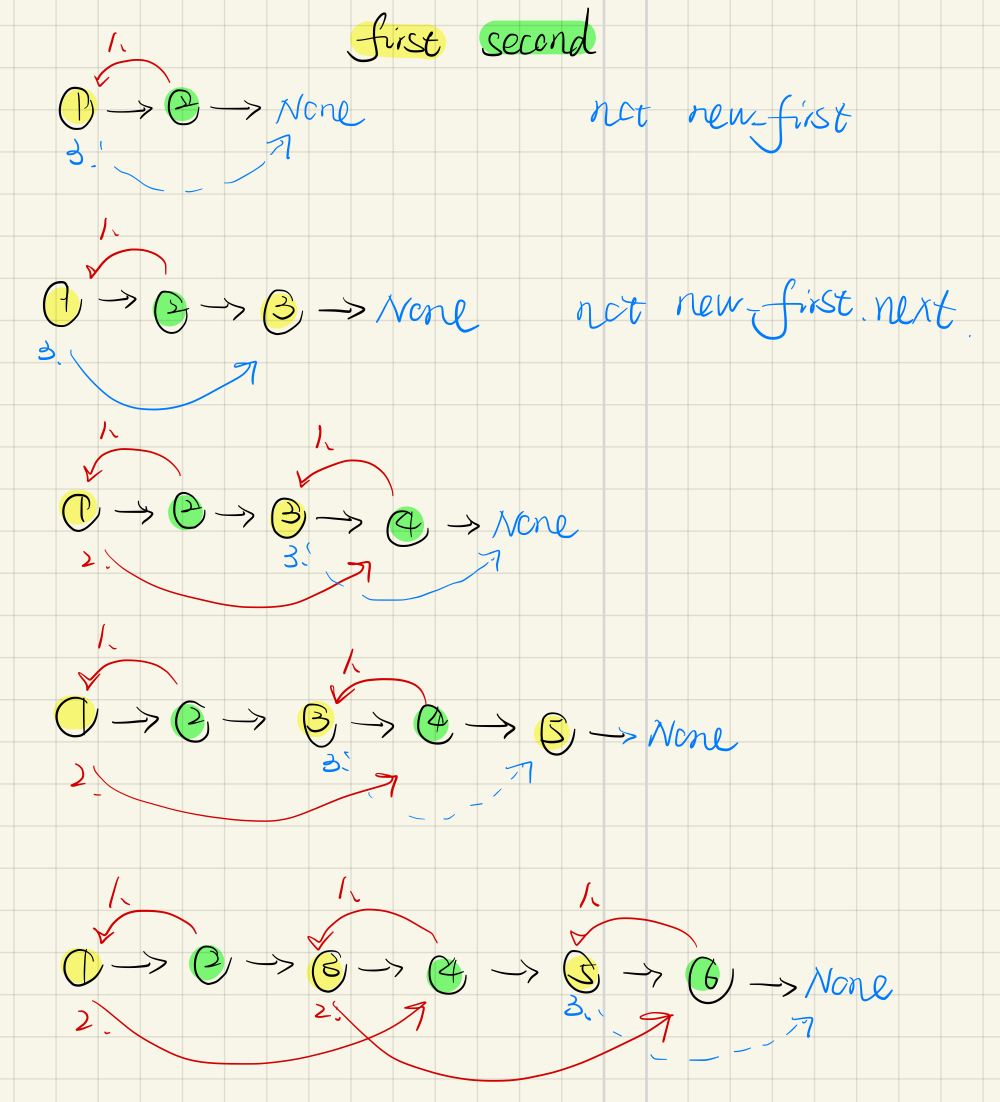class Solution {
public:
ListNode* swapPairs(ListNode* head) {
if (head == nullptr || head->next == nullptr)
{
return head;
}
ListNode* newHead = head->next;
ListNode* nextHead = head->next->next;
newHead->next = head;
head->next = swapPairs(nextHead);
return newHead;
}
};

24. 两两交换链表中的节点
入选理由
暂无
题目地址
https://leetcode-cn.com/problems/swap-nodes-in-pairs/
前置知识
题目描述
你不能只是单纯的改变节点内部的值,而是需要实际的进行节点交换。
示例 1:
输入:head = [1,2,3,4] 输出:[2,1,4,3] 示例 2:
输入:head = [] 输出:[] 示例 3:
输入:head = [1] 输出:[1]
提示:
链表中节点的数目在范围 [0, 100] 内 0 <= Node.val <= 100